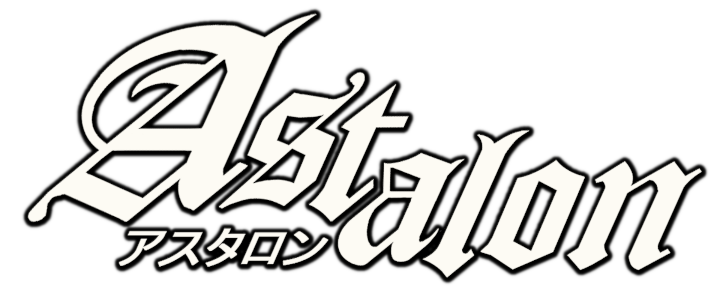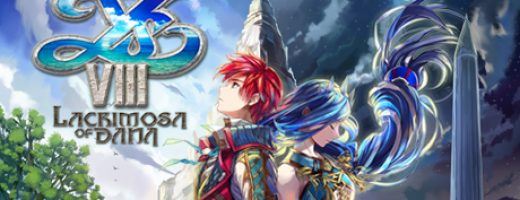Astalon: Tears of the Earth Review
Though I Walk Through the Shadow of the Tower of Death
Some way, somehow, my gaming library is slowly being infiltrated by Metroidvanias. The latest addition to my Switch download catalog, Astalon: Tears of the Earth, is one such example. This retro-styled game bears all the hallmarks of its genre: a dark and foreboding tower to explore, grotesque monsters to exterminate, and the all too likely chance that the heroes are going to die in the near future.
The world of Astalon is blasted and bleak, as most of the land has turned to desert from the atrocities of an ancient war. Out of the sands rise ruins, towers, and temples dedicated to demons born from the memories of old hatred. These Gorgons are abominations of twisted flesh hidden within facades of stone, and they do not so much hate humans as find them delectable. One tower in the wastes is poisoning the local river, sickening and killing the people who live downstream, and so three heroes enter the darkness to put an end to the threat.
The game spends the first few minutes introducing the player to the three principal characters and their strengths in exploration. Arias is the warrior, heir to a title and a legacy he has yet to earn on his own. At the start, he’s the one with the best defense, and his sword cuts through barriers with ease. Kyuli is the roguish archer, striking from a distance and scaling walls that the others cannot manage. Algus is the wizard, formerly a companion to Arias’s father, who can blast his way around obstacles with magical force. With their combined skills, most of the tower can be explored, though it is not an easy task. Two other recruits, Zeek the merchant and Bram the slayer, add their own special abilities, allowing the player to solve more of the puzzles hidden in side chambers. Proper character choice is an important factor in success, as for much of the game the player can only swap out at campfires. Once the ability to party-switch at will becomes available, the puzzles steadily ramp in complexity.
True to its appearance, the Tower of the Serpents is a hazardous place to visit, and death is a frequent experience. Unknown to his companions, Algus has made a pact with Epimetheus, the Titan of Death, to bring them all back to the starting point of the tower whenever they’re slain, with only the wizard (and the player) remembering the full details of the now-collapsed alternate timeline. Changes made to the tower, including the activation of shortcuts and the defeat of any bosses or mini-bosses, are permanent, so there is always forward progress even as the heroes die over and over again. Epimetheus will also sell upgrades in the downtime between death and new life, payable in soul orbs collected from slain monsters. These include upgrades to stats on specific heroes, an increase to the collective health pool, or any number of general boosts and bonuses, some temporary and others permanent.
Mystery and exploration are major elements of the game, as many of the tower’s keys and items of importance are hidden in odd ways. Once the heroes have found the special items, it’s not obvious how they may be used, as the descriptions found in the game’s menu are, while flavorful, not particularly informative. It requires the player to literally buy a clue from Epimetheus before the purpose of many passive-effect items is known, and this is par for the experience. Astalon expects the player to learn as they go, and thus doles out vital information, setting details, and elements of world-building in drips and drabs. This leaves the impression that there’s more to the world of the game than is actually given, which fits with how this title is labeled as Episode 2, despite there not yet being an Episode 1.
Graphically, this game hews close to its 8-bit inspirations even as it surpasses them. Everything is done in a simplified palette with retro-styled sprites, and there is anti-aliasing in effect to give it that old TV screen fuzziness around the edges. Character designs are by Ryusuke Mita, of the manga series Dragon Half, which lends the heroes a distinctive aesthetic in their portrait art and in the closing credits. The aesthetic extends to the greater part of the tower itself, with many rooms possessing unique decorations and flourishes for no other reason than to appear interesting.
Accompanying the experience, the music is very much of the 8-bit era, with energetic chiptunes that could have come from the NES. The soundtrack is the work of LABS Works head designer and graphics artist, Matt Kap, who is an 8-bit Renaissance man in his own right.
A huge portion of the tower is optional, allowing for greater chances to explore and sniff out hidden keys, switches, and power-ups. Upon completion of certain benchmarks, more gameplay options become available. There’s the standard Boss Rush mode, and then a Black Knight mode that allows the player to take the role of the game’s antagonist as he suffers the ordeals of the tower in his quest for vengeance. There’s even a Monster Mode that lets one play as a tower gargoyle in what can only be an homage to the Game Boy classic title, Gargoyle’s Quest. The latter two modes make certain power-ups available from the start, meaning that it’s possible to sequence-break one’s way across the map in new and interesting ways.
I encountered several minor bugs on my playthrough, of varying levels of annoyance. The most common involved collision detection and clipping in regards to walls and blocks, with most of the bugs occurring to enemies rather than my heroes. However, it did once lead me to get trapped in a ceiling with no way out, prompting a console reset. Otherwise, there were rare instances where button inputs failed to work, and the game occasionally forgot that Zeek can lift blocks over his head. While some of this disappeared after the most recent patch, it is something to be aware of.
Astalon: Tears of the Earth has just about everything a fan of Metroidvania-RPGs could want in the sub-genre. The plot is simple but flexible, the characters are well presented, and the tower is a meatgrinder. There is challenge enough to be found for the average gamer, though of course mileage may vary. Personally, this game presented an interesting and difficult twenty hours to complete, but what a feeling of satisfaction as the final credits rolled. I am looking forward to seeing where things go from here.
Disclosure: This review is based on a free copy of the game provided by the publisher.


Strong exploration
Elevates its 8-bit aesthetic
Extensive non-critical content and bonus game modes
Later difficulty spikes
A few minor bugs to iron out













This is easily the best metroidvania I have played since Castlevania: Symphony of the Night. Yes, I believe it’s better than every single sequel that has come after SofN and all the homage games that pay tribute to it. I know that’s a huge boast to make but the swappable characters combined with the upgrades, the HUGE tower, extremely clever puzzles and shortcuts, no perma-death and very challenging difficulty makes it number one for me.
HIGHLY recommended to anyone that likes a tough, fair challenge and especially metroidvanias. Once you get the hang of the controls and a few upgrades under your belt the only thing that will generally kill you is spikes and rushing in to unfamiliar territory. Near the end you’re nearly invincible and that’s worth all the headache.
I finished the game with 100% map completion and item retrieval and had to play it in small to medium doses. Sometimes when dying it really takes the wind out of your sails since some of the fast travel points are quite far from each other.
Other than the aforementioned bugs the only “complaint” I would have is that every room is usually its own puzzle. Unlike SotN the screen never scrolls with the character and only scrolls at each screen edge like VERY old games. Due to constant screen scrolling and an overabundance of screen flashing (which thankfully can be turned way down in the options menu) I’d need to take the rest of the night off playing due to eye strain. Other than that I loved this game from start to finish.